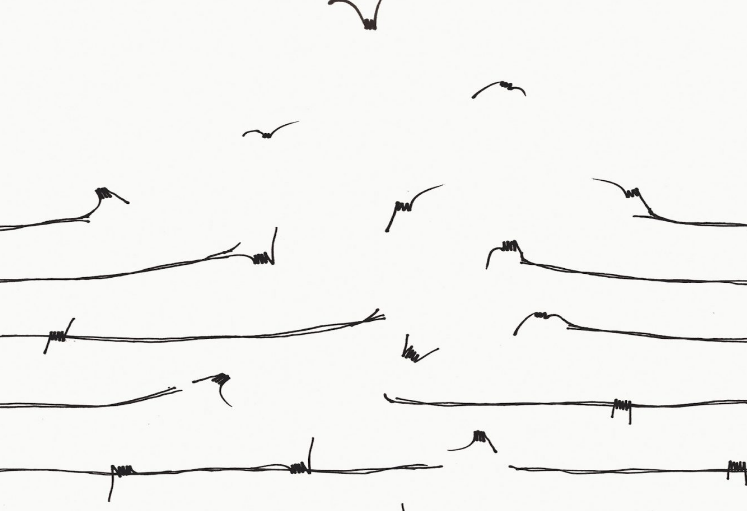Yoga & meditation: how body and breath work can change your mindset
February 22, 2021Our western cultures have accepted the idea of psychosomatics (the impact of the mind on the body). On the other hand, we more rarely talk about the opposite phenomenon: It is possible and even strongly recommended to work with the body and the breath to reduce suffering.
duhkha-daurmanasya-aṅgamejayatva-śvāsa-praśvāsa-viksepa-saha-bhuvah
Patañjali yoga-sūtra I.20

Recognising the accompanying symptoms of a mental or emotional disturbance to be able to act upon them
Yesterday I felt a tight feeling in my chest. My breath was shorter than usual. I was more irritable too. This feeling had been rising in me for 2-3 days without being able to really understand the cause, because otherwise everything was fine. Then late yesterday morning as I was looking at the schedule for the week I saw the date. the 21st of February. The anniversary of my mom’s death. There you go, I said to myself! She’s been gone for quite some time now and I admit that this year I didn’t pay much attention to that date. And yet… unconsciously I did. My body remembered this pain of grief.
This is what Patañjali explains in the I.31 sutra. It evokes in the form of a list, as often in Indian culture, the accompanying symptoms of a mental and / or emotional disturbance: What are these symptoms?
#1 duhkha: literally a feeling of oppression, restriction, suffering, tightening, unease.
#2 daurmanasya: negative, troubled, even bad thoughts. They darken the mood.
#3 angamejayatva: these are the physical manifestations of the disorder (agitation, tremors, palpitations).
#4 śvāsa-praśvāsa: the respiratory function is disturbed (shortness of breath).
Yoga and transformation
Nothing new then. Human beings have suffered since they have existed, and when they suffer these symptoms appear. “Each sign can affect others and find expression in them. These symptoms should attract our attention and prompt us to take appropriate actions ”(Extract of Frans Moors’ commentary on this sutra).
The good news is that the reverse is also true. Our western cultures have accepted the idea of psychosomatics (the impact of the mind on the body). On the other hand, we more rarely talk about the opposite phenomenon: It is possible and even strongly recommended to work with the body, the breath and the mind (via meditation) to reduce suffering. It is even the “job” of yoga to bring us:
- from duhkha to sukha (peace, appeasement, relaxation)
- from daumanasya to a positive mind
- and from śvāsa-praśvāsa to directed suksma (smooth and regular breathing).
So I got on my mat. I breathe and meditate a little more than usual these few days. And little by little I see my chest more at ease.
Postures & breath work to enlighten the mind
This week with my students I will put a special attention on postures and techniques that help to feel immediately more at ease.
Prānāyāma focusing on long exhalations, sun and moon salutations with gentle and positive associations with light, peaceful mantras, inversions.
Professor Krishnamacharya (1888-1989)
He was one of the most influential yoga masters of modern time. Over the course of his long life he shared his knowledge of Yoga as a holistic healing discipline with thousands in his own country and with many others who came to study with him from Europe and America. The yoga-sūtra of Patanjali constitutes one of the pillars of his teachings. Read More.
The teachings of Patañjali yoga sūtra
Yoga tradition holds the Yoga Sūtra of Patañjali (YS) to be the foundational texts of classical Yoga philosophy. Describing and analysing in depth the human mind/psyche, it offers to reflect on the human condition and the options we have on hands to reduce suffering. There is no doubt the Yoga Sūtra of Patañjali (YS) has withstood the test of time and is as relevant today as it was a millennia ago.
Patañjali & you in 2021?
For that reason I am thrilled to pass it on to my students. Throughout the 1st quarter 2021, I will be highlighting a selection of key sūtras in my yoga & Meditation classes, mingling physical and breath practice to Yoga Philosophy (classes schedules click HERE) Classes available at Lisbon Studio Urbanbliss Lisboa or online.
Celine Chambat
Yoga teacher in Lisbon & Therapist
Vous avez aimé cet article? Lisez aussi:
Cultivate detachment with Patañjali
Bibliography

